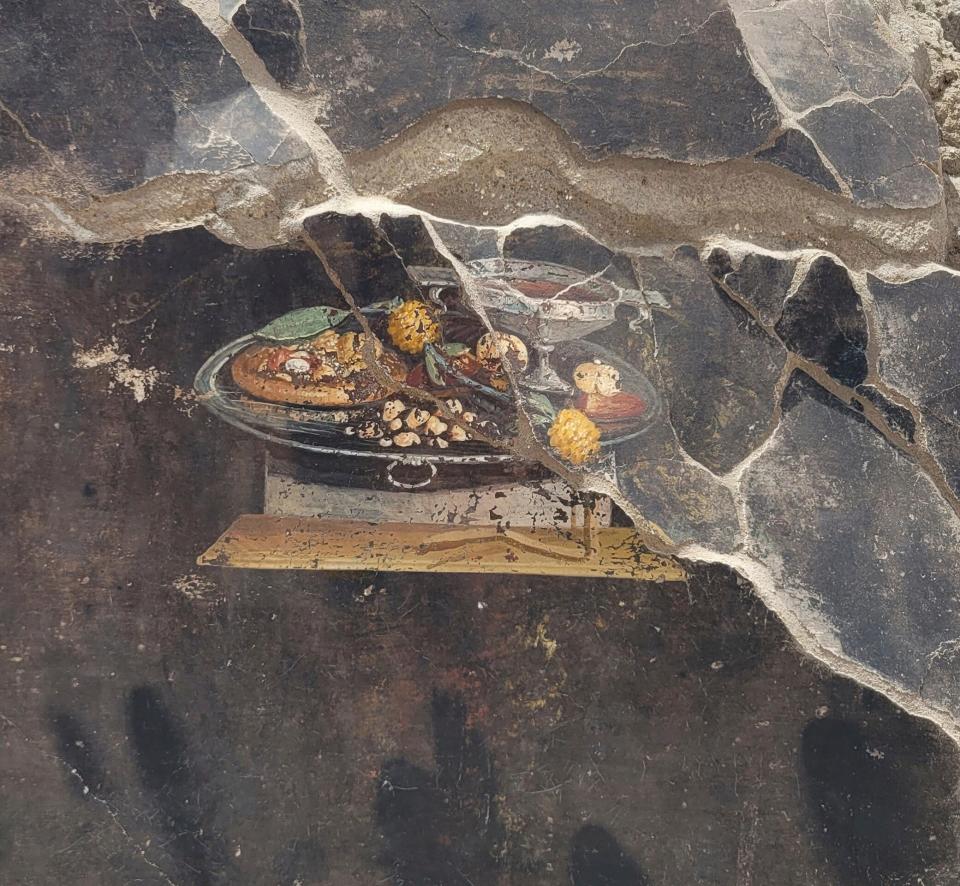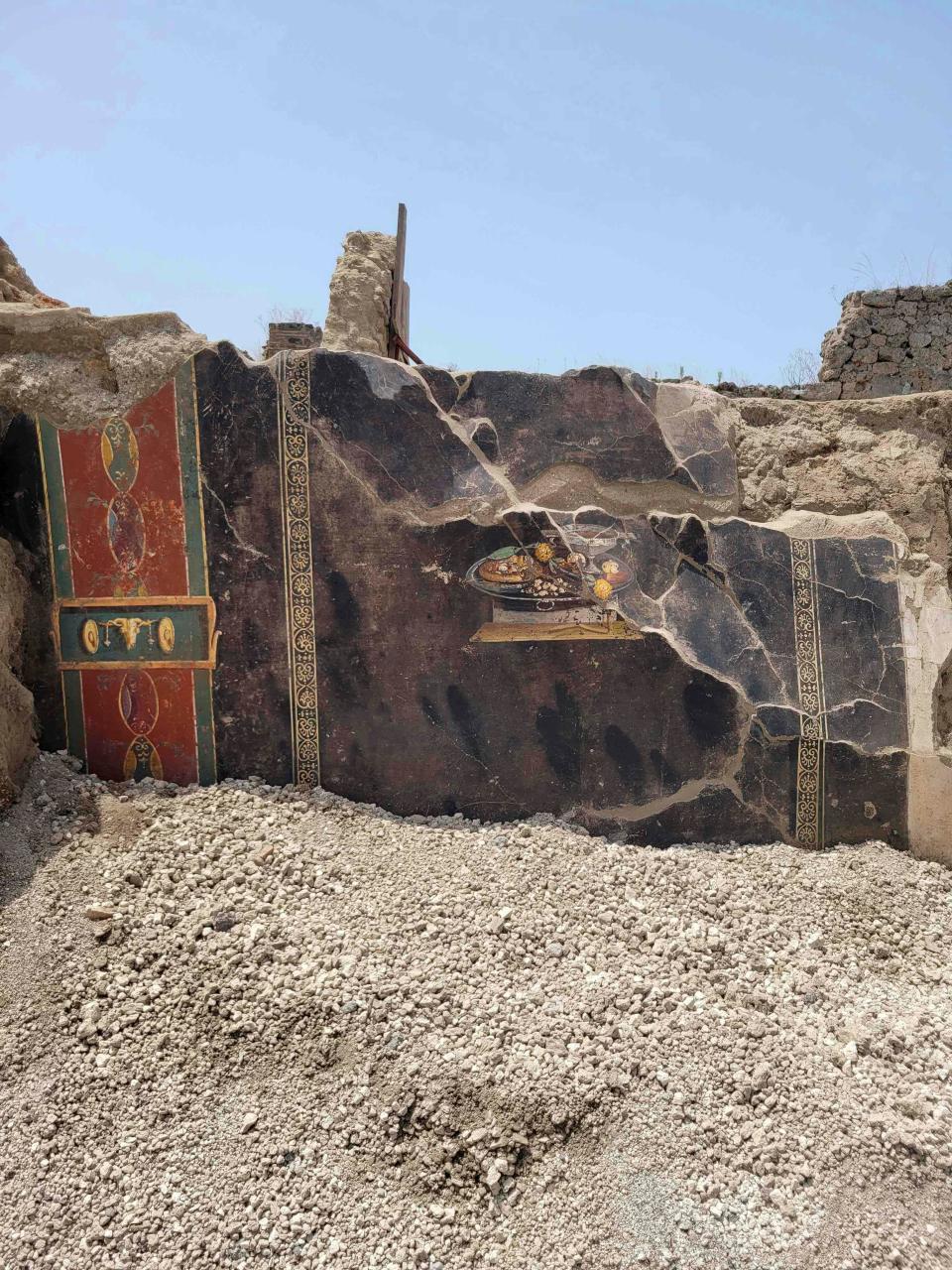Ancient painting of a pizza precursor found in Pompeii — and it's covered in fruit
Bad news, pineapple pizza haters – a painting recently discovered at the Pompeii archeological site indicates the first pizza precursors were likely topped with fruit.
The newly uncovered fresco painting is believed to be 2,000 years old and was discovered by researchers at the Pompeii archaeological site. In it, a round, bready dish can be seen sitting next to a wine chalice and series of fruits and flowers, all arraigned on a silver platter. While the doughy disk appears to have a crust and handful of topping, features we recognize today as distinctly pizza-like, experts say cooks at the time lacked the proper ingredients to make a truly authentic modern pizza.
A statement released on Tuesday by the Pompeii Archaeological Park press office said the painting likely represents focaccia bread covered in fruits like pomegranates and dates, topped with spices and type of pesto or other condiments.

New study: Human ancestors may have butchered and eaten each other
It's probably not pizza, which was invented later
Considering two vital ingredients to make a pizza as we know it, tomatoes and mozzarella cheese, were not available in Rome at the time, researchers believe the image is instead that of mensa, a flatbread that doubled as food and a plate during Roman times. Tomatoes did not arrive in Europe from the Americas until the 16th century and, though the first mention of mozzarella appears in an Italian cookbook as early as the year 1570, Italians did not start using the ingredients to make what is now called pizza until the 18th century, when it was invented in Naples and even served to the king and queen.
Pizza has 'now conquered the world'
The non-pizza painting was found in the atrium of a house connected to a bakery, in which excavators were also able to observe what appeared to be ovens. The skeletal remains of three people were also found in the building, which was first partially excavated in the 19th century before the dig resumed in January of this year.
Researchers also noted the juxtaposition in the image of a meal often considered fit for the lower class served on fine silver dining ware, a contrast that can be compared to our own perception of pizza today.
“When considering this matter, how can we not think about pizza, also born as a ‘poor’ dish in southern Italy that has now conquered the world and is served in Michelin star restaurants,” said Gabriel Zuchtriegel, director of the Pompeii archaeological site.
Archeologists have more to explore in Pompeii
While this discovery was made in Regio IX, one of the nine districts the city is split into, archeologists have plans to continue investigating the still largely unexplored metropolis. Pompeii was buried in ash after the eruption of Mount Vesuvius in AD 79, which effectively froze the city and its inhabitants in time, offering a rare opportunity for researchers to study the details of ancient Roman life.
The preserved remains of the city and its people were first re-discovered in the 16th century, but only about two-thirds of it has been excavated and studied since then. With so much left yet unexplored, there are likely more exciting discoveries, pizza-related or not, awaiting those who go looking.

More Pompeii: Latest bodies found in Pompeii ruins show deaths weren't all caused by Vesuvius, researchers say
This article originally appeared on USA TODAY: Pompeii pizza painting: See early depiction of the food favorite

